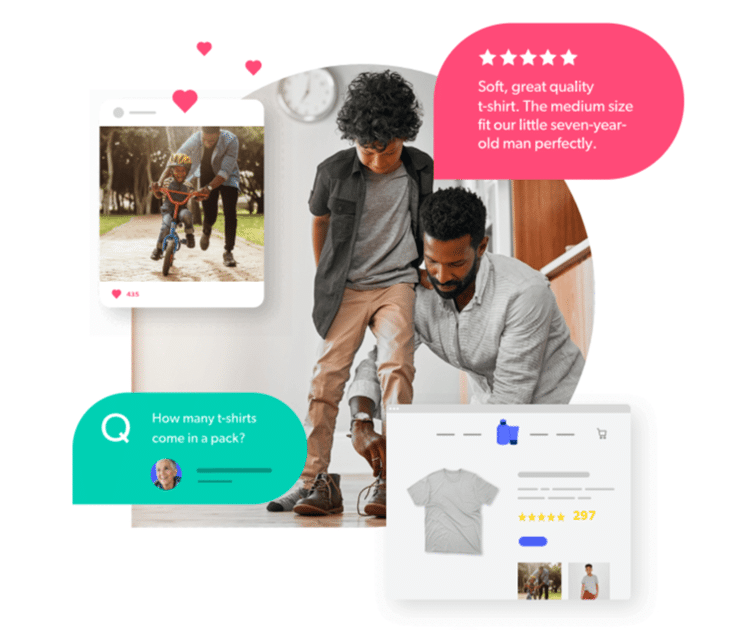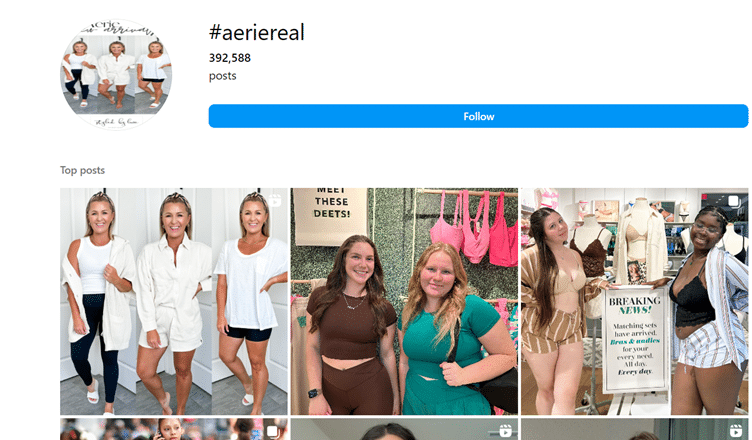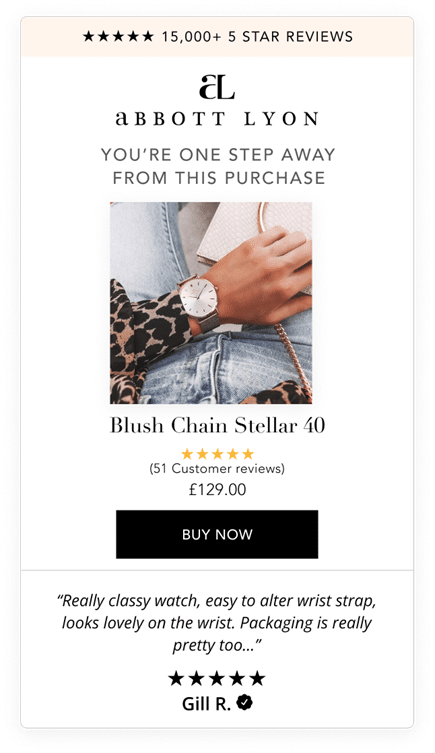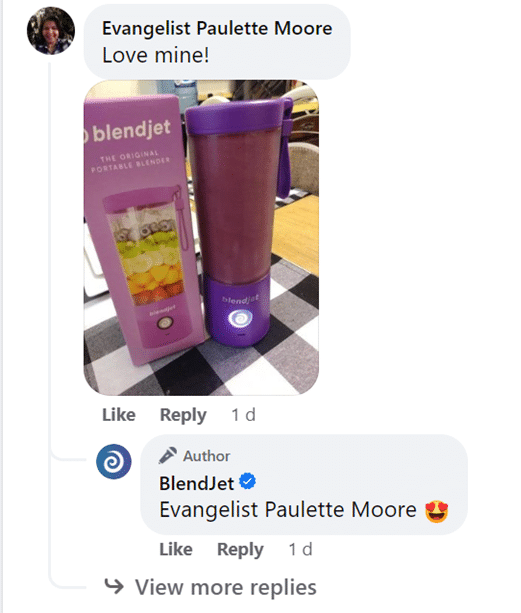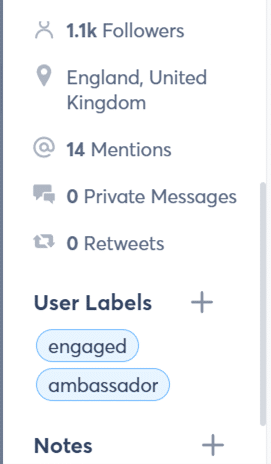CMOs have had a lot to contend with lately. Should we use AI? Is ChatGPT a good content creation tool? And what on earth is happening over at Twitter (X)?
As a CMO you might be thinking, “Are UGC content creators replacing social media managers? Or should we be hiring UGC content creators to work alongside social media managers?”
Here’s what CMOs need to know.
What Is UGC?
UGC (user-generated content) is a proven marketing technique. Others create it, not the brand. UGC content can be good reviews, product photos, case studies, or videos showcasing your brand, products, company culture, or location.
Benefits of UGC
- A brand cannot replicate the authenticity created by putting out its own marketing messages. 72% of customers believe it is more credible when other customers share their experiences.
- Maximizing brand reach on social media by expanding your audience to that of the creator or micro influencer.
- Engagement for UGC is generally better, too. Consumers are 2.4X more likely to view user-generated content than content created by the brand.
- Content created by employees, customers, or social media fans can maximize social media ROI and significantly increase brand loyalty.
- Brands have started using UGC for email marketing and have reported a whopping increase of 760% in revenue.
Example of UGC Content Creators
Here’s an example of how UGC can increase social ROI on a website. While I browse a fave online store, I see these tights. Cute. But will they suit me? Are they good quality?
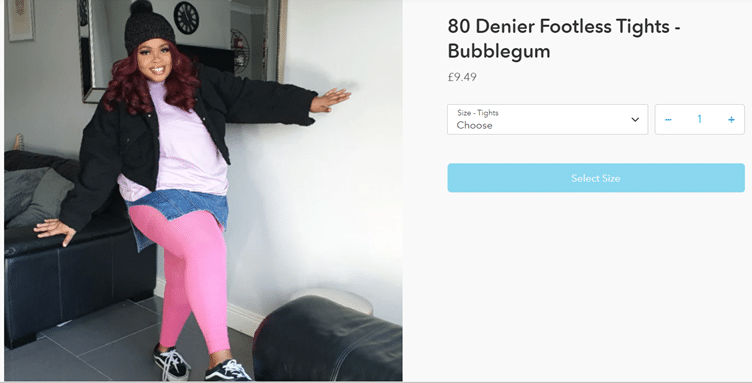
Example of UGC content creation
I scroll down and see the UGC grid on Snag tights. It shows real people wearing the tights, with different body shapes, skin tones, and styles.
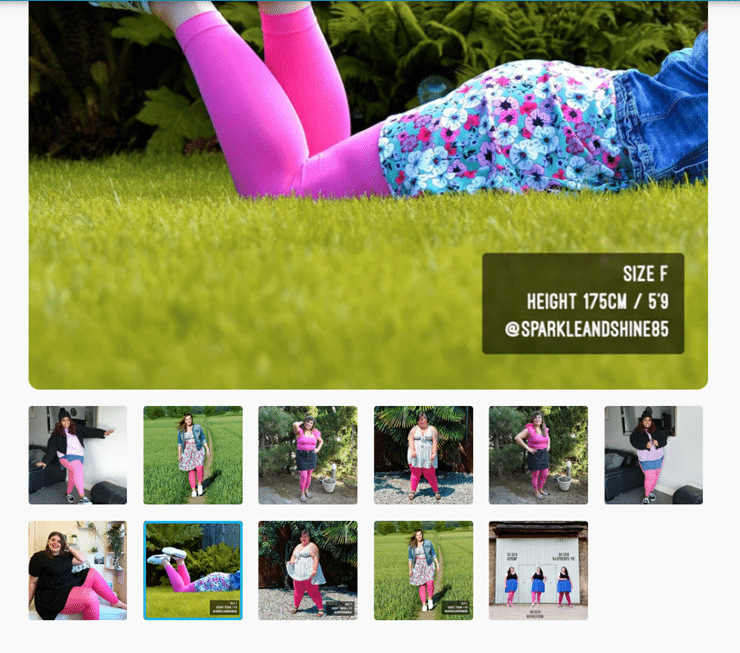
Example of how UGC content can inspire more content
Yes, I bought them (and for more tights). UGC works.
What Is a UGC Content Creator?
So, how do brands get involved if end users create UGC? There are several ways brands are playing in the UGC arena. Let’s classify them as The Good, The Expensive and The Ugly.
The good
The good way to be a UGC content creator is to monitor and listen for authentic UGC mentions and curate them into your social media planning. Doing so is essentially free.
However, it will take a lot of resources to create the brand traction needed to start organically generating high-quality UGC.
Additionally, you will need professional tools like Agorapulse for listening, monitoring, and interacting across your social media channels. You might also coordinate employee advocacy projects and initiating case studies and reviews.
Taking this approach is low risk as the content is genuine, likely to garner positive engagement, and increase ROI.
The expensive
You can pay influencers and micro influencers to talk about your brand favorably on their social media channels. As a UGC content creator in this scenario, you would be providing these individuals with content, posts, reviews, photos and inspiration depending on the contract you have between you.
Payment may made through the provision of a product or services or cash. Depending on the product, this strategy can be riskier.
Recently, Kim Kardashian caught the attention of regulators when promoting cryptocurrencies in a social media post for EMAX. Kardashian failed to disclose that she was paid $250,000 to publish a post on her Instagram account and landed a fine of $1.26 million. NBA star Paul Pierce will pay $1.4 million for touting the same company.
Regulators can and do watch social media for undisclosed influencer promotions or misleading UGC posts.
Would Kim promote a product without payment? Perhaps not. However, micro influencers, customers, or genuine fans might.
The ugly
“People are being exposed to higher volumes of misleading user-generated content as more of their daily lives have moved online since the start of the pandemic—a challenge that consumers want to see brands tackle head on.” — Jim Radzicki, chief technology officer at TELUS International.
But what if the brands are creating it? Fake reviews, made-up employee testimonials, non-existent awards, and manufactured social media fan accounts. Thar can constitute UGC content creation for some brands. It isn’t even that unusual anymore.
Review farms are appearing globally, offering services to businesses that pay to artificially increase their ratings on review platforms.
“A lot of times businesses unwittingly will hire these firms because they try to position themselves as online marketing and reputation firms.” — Brian Hoyt, TripAdvisor’s head of global communications and industry affairs
An eagle-eyed social media audience can find out and expose you, which is the danger here. You could also run into problems with regulators.
The Federal Trade Commission’s Division of Advertising Practices monitors deceptive endorsements that cheat consumers. Fake reviews are illegal because they violate Section 5(a) of the Federal Trade Commission Act (FTC Act) (15 USC §45). It prohibits “unfair or deceptive acts or practices in or affecting commerce.”
You often see fake comments on Facebook ads. That is coordinated internally. Thousands of likes, staged questions and positive reviews! Social media managers see what you did there!

Example of fake UGC
What’s the Difference Between the Role of a Social Media Manager and UGC Content Creator?
Social media manager
A social media manager’s role is multi-faceted. Social media managers plan content for many channels, which could be 10+ social media networks and messaging sites.
They will create and implement a social media strategy yearly that aligns with business KPIs.
They research trends across the different channels daily. Also, social media managers coordinate images, GIFs, and videos.
They also write, schedule and publish content, images, videos and memes regularly.
UCG content creator
A UGC content creator will focus on either creating or curating authentic content. They could be creating videos, images, or text for other micro influencers or ambassadors to promote the brand. They might also be placing them via a fake social media account or email address (see the bad above!)
UG content creators also focus on listening and monitoring mentions, searching for brand ambassadors, and capturing or sharing customer sentiment. That includes reviews, case studies, surveys, and engaging advocates to drive UGC.
Their role might be more ROI driven understanding that proactive and dedicated UGC has huge impacts on a business. This includes driving sales, reducing returns, lowering shopping cart abandonment and promoting new product lines.
How Can CMOs Use UGC as a Sales Strategy?
Zarina Lam Stanford, CMO at Bazaarvoice, the leading provider of product reviews and user-generated (UGC) solutions, was interviewed by Forbes.
“The voice of the consumer has never been more powerful. What brands say about themselves doesn’t hold as much weight as it once did. In fact, (54%) of consumers we surveyed said that UGC makes them more confident in their purchase decision than professional photography (46%) does. You’re not who your shoppers want to hear from on your products– they want to hear from each other, “says Zarina.
And in regards to utilizing UGC as a sales strategy, she adds:
“Using data from our Bazaarvoice benchmark data from our network of over 11,500 brands and retailers, we found a 144% lift in conversion rate when shoppers engaged with UGC. Consumers rely on UGC to make well-informed purchase decisions, and they depend on that information to be authentic and reliable. Trust is the currency for business today. To gain that trust you must be authentic to your brand, about your products, and most importantly, incorporate authentic reviews, positive or negative, as part of your brand’s voice and equity.”
What Techniques Can You Employ to Utilize UGC as a Sales Strategy?
Ecommerce relies on a series of engaging interactions or consumer touchpoints.Each purchase step should bring the consumer closer to your brand. UGC can effectively attract consumers.
Use UGC in your shopping carousels and ads
Shoppable content is the route retailers are taking, and its success is boosted by UGC. Customers are 6X more likely to make a purchase if the product page includes visual UGC. Whether it’s a Facebook carousel, Pinterest catalog, or web store, you can make it pop with real reviews and photos.
Remember, acknowledge creators and ask permission before you use their content in a paid ad. You could sweeten the pot with some free merch!
Utilize a branded hashtag so you can gather UGC
This can be featured on all your touchpoints as a “call to create.” That’s product pages, social media channels, emails, and even packaging! Encourage your customers to snap a photo and share their purchase experience, then showcase it in your marketing.
Women’s clothing company Aerie’s use #AerieReal to gather UGC then utilize it in their marketing. And just look at the 392,588 posts!
Create trust in the purchase process by showcasing happy reviews from real consumers
A good tip is to link to their actual social media accounts or a photo of real people using the product. Anyone can write a fake review and consumers are more wary these days.
The simplest method is to utilize a UGC collection tool. This tool locates and gathers visual reviews, Instagram tags, and @mentions.
It then consolidates them into a single location. You can also strategically embed these on your site or as popups when a cart is abandoned or a product is removed. IO is a popular one and can generate pop ups as shown below.
Remember, though: It’s good to implement a moderator system. Anything you share needs to be appropriate and brand-friendly. This might fall under the UGC Content Creator’s duties.
Showing how a product would benefit your fans increases conversions by 10% when included in an online purchase path
Creating an environment where fans want to share photos is key to this. Blendjet does this exceptionally well.
Share tagged UGC photos and videos on your brand’s social media pages.
Bonus points for being diverse and showing how different community members love your brand or use your products.
If you’re just starting out with UGC, learn to foster authentic relationships with fans and customers who love your brand. Brands using Agorapulse can connect and engage with fans by monitoring conversations, keywords, and hashtags. You can also identify ambassadors, add notes and reach out to them directly for a collab.
In Conclusion
So, should you hire a UGC creator? If your brand is big enough, ambitious enough and has the budget, yes. UGC is a proven route to increasing ROI and brand loyalty.
Can your social media manager do it? Yes, but understand that this role is already demanding and adding UGC might be a considerable burden, which then detracts from other areas of your social media marketing.
Recruitment aside, CMOs should consider adding UGC into their 2024 marketing strategy to differentiate and stand out from the usual marketing messages.
Sign up for a free trial of Agorapulse and start discovering why it’s a tool that UGC content creators and social media managers love.




